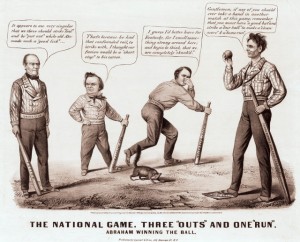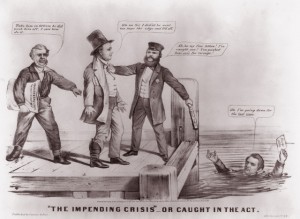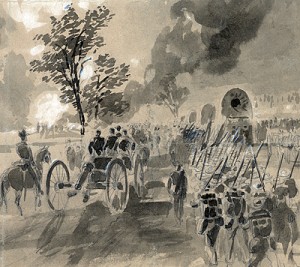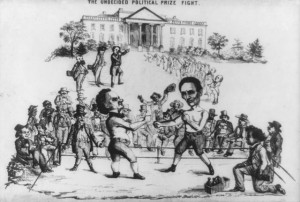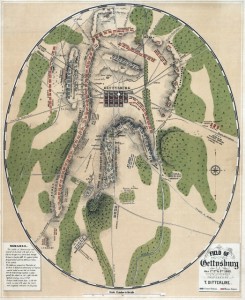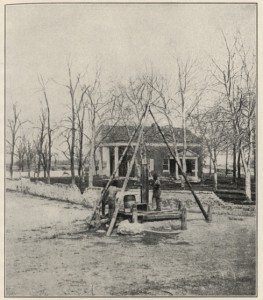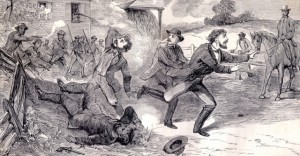 Louis Maurer (1832-1932) lived to be 100 years old—fulfilling one century’s worth of accomplishments. The New York Times described Maurer in his obituary as a “lithographer, painter, cabinetmaker, shell expert, wood and ivory carver, anatomist, crack shot, winner of a blue ribbon in the first New York horse show, and the first to ride a horse in Riverside Park.” Maurer, the son of a cabinetmaker, was born in Biebrich, Germany, but immigrated to the United States in 1851. In New York, Maurer worked as a wood carver until Charles Currier, the brother of the publishing house co-owner Nathaniel Currier, discovered Maurer’s talent. Maurer worked as a lithographer for Currier & Ives for a decade beginning in 1854. Currier & Ives published 27 of Maurer’s lithographs in a ten-year period, including 17 cartoons of the presidential election of 1860. Though today, Maurer’s 1860 cartoons are some of the most recognized Currier & Ives prints, he left the firm to break out of his own, and in 1872 founded his own lithographic company Heppenheimer & Maurer. Maurer officially retired in 1884, but did not stop gaining new talents or experiences. Maurer began studying the flute at age 80, and on his 100th birthday, performed for his family and friends. The New York Times reported that Maurer was still full of vigor even at towards the end of his long life: “in 1930, at Green Pond, N.J. he stopped a mounted policeman and prevailed on the officer to let him ride the horse a while.” Louis Maurer passed on his artist talents to his son Alfred, one of the three children he had with his wife Louisa.
Louis Maurer (1832-1932) lived to be 100 years old—fulfilling one century’s worth of accomplishments. The New York Times described Maurer in his obituary as a “lithographer, painter, cabinetmaker, shell expert, wood and ivory carver, anatomist, crack shot, winner of a blue ribbon in the first New York horse show, and the first to ride a horse in Riverside Park.” Maurer, the son of a cabinetmaker, was born in Biebrich, Germany, but immigrated to the United States in 1851. In New York, Maurer worked as a wood carver until Charles Currier, the brother of the publishing house co-owner Nathaniel Currier, discovered Maurer’s talent. Maurer worked as a lithographer for Currier & Ives for a decade beginning in 1854. Currier & Ives published 27 of Maurer’s lithographs in a ten-year period, including 17 cartoons of the presidential election of 1860. Though today, Maurer’s 1860 cartoons are some of the most recognized Currier & Ives prints, he left the firm to break out of his own, and in 1872 founded his own lithographic company Heppenheimer & Maurer. Maurer officially retired in 1884, but did not stop gaining new talents or experiences. Maurer began studying the flute at age 80, and on his 100th birthday, performed for his family and friends. The New York Times reported that Maurer was still full of vigor even at towards the end of his long life: “in 1930, at Green Pond, N.J. he stopped a mounted policeman and prevailed on the officer to let him ride the horse a while.” Louis Maurer passed on his artist talents to his son Alfred, one of the three children he had with his wife Louisa.
To view a slideshow of a collection of Maurer’s cartoons in Flickr, click on any of the images below:



